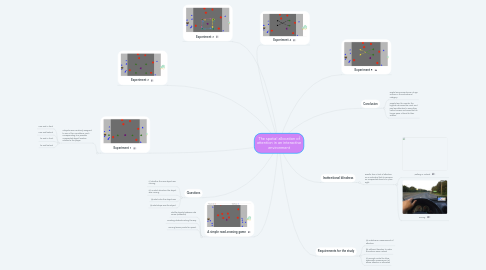The spatial allocation of attention in an interactive environment
by Domas Drakšas


1. A simple road-crossing game
1.1. shuttle objects between safe zones (sidewalks)
1.2. avoiding obstacles along the way
1.3. earning bonus points for speed.
2. Questions
2.1. (1) whether the new object was moving
2.2. (2) in which direction the object was moving
2.3. (3) what color the object was
2.4. (4) what shape was the object
3. Experiment 1
3.1. Subjects were randomly assigned to one of four conditions, each corresponding to a possible unexpected object location relative to the player:
3.1.1. near and in front
3.1.2. near and behind
3.1.3. far and in front
3.1.4. far and behind
4. Experiment 2
5. Experiment 3
6. Experiment 4
7. Inattentional blindness
7.1. Results from a lack of attention as an individual fails to perceive an unexpected stimulus in plain sight.
7.1.1. Walking in a street
7.1.2. Driving

